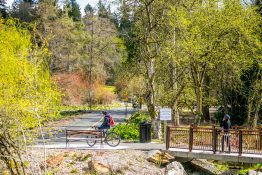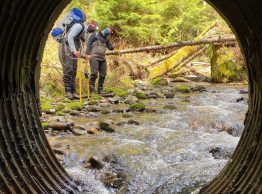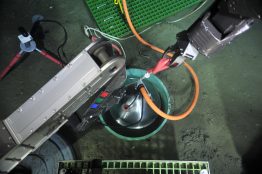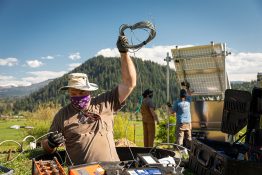Weaving nature more deliberately into the fabric of our urban communities can improve our quality of life. From urban parks to sustainable infrastructure, integrating nature into our cities makes us healthier, happier, smarter and safer. On Oct. 25, the College of the Environment’s 2023 Doug Walker Lecture at Town Hall Seattle explored these topics and more with UW alum Heather Tallis, an environmental scientist and professor.
Read more »UW experts offer hot takes on El Niño, weather and ocean temperatures
Ocean temperatures and their connections to weather trends have been making news. Five UW College of the Environment experts offer their perspectives on the current El Niño — a climate pattern in the tropical Pacific Ocean that affects weather worldwide. UW researchers comment on the current El Niño, its effect on weather in the Pacific Northwest, as well as on regional and global ocean temperature trends.
Read more at UW News »DNA shows where Washington culvert replacements helped spawning salmon
To help struggling salmon populations, the state of Washington is legally required to replace hundreds of culverts that divert streams under roadways. The state transportation department is replacing old, rusting metal pipes with broad, concrete promenades that provide more gradual gradients and gentler flows for salmon swimming upstream to access more spawning grounds. The full scope of the effort will last 17 years and cost $3.8 billion.
Read more at UW News »UW researchers land $10.6M to build subduction zone observatory
Scientists and engineers from the UW School of Oceanography, Department of Earth and Space Sciences and the Applied Physics Lab, along with partners at Scripps Institution of Oceanography, recently were awarded more than $10 million to build an underwater observatory in the Cascadia subduction zone. The funding comes from the National Science Foundation and aligns with larger efforts to better understand subduction zones more broadly.
Read more »ShakeAlert offers latest earthquake science as region practices Great ShakeOut safety drill Oct. 19
As people and organizations across the globe practice earthquake drills Oct. 19 on International ShakeOut Day, closer to home in the Pacific Northwest, communities are bolstered by a state-of-the-art earthquake early warning system — and a research center that maintains the second-largest seismic network in the U.S. The Pacific Northwest Seismic Network, housed within the UW College of the Environment, collects data from more than 700 seismic stations across Washington and Oregon, plus data from partner organizations in British Columbia and bordering states.
Read more »





